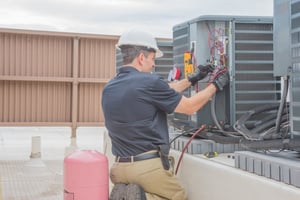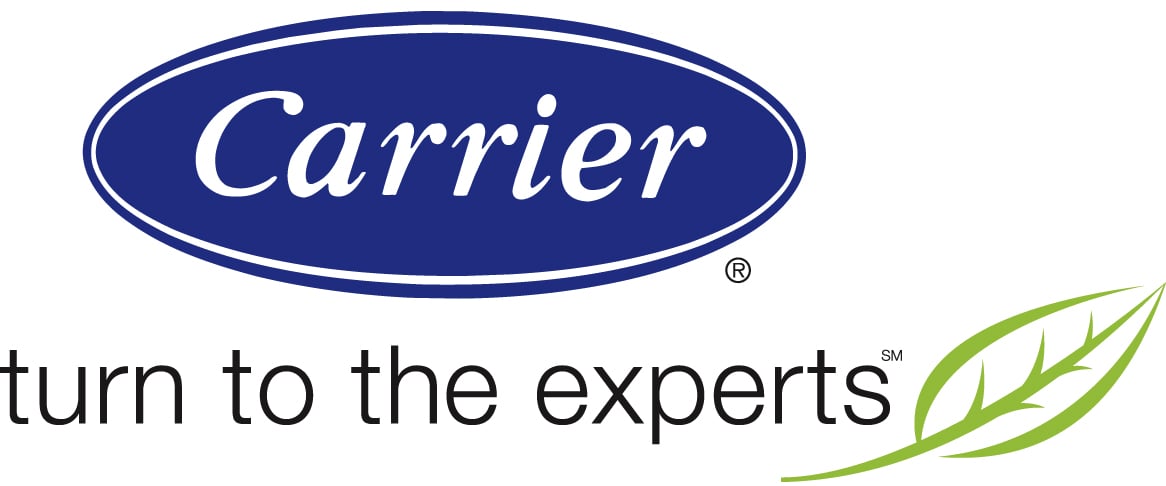 AFUE. HSPF. MERV. SEER. Do these letters look like a word jumble puzzle to you? Or maybe names from a science fiction novel? If so, that’s understandable. Lots of homeowners aren’t familiar with what these acronyms mean – until they’re in the market for a new heating or cooling system. That’s when you’ll definitely want to be familiar with them, which is why we put together this guide to understanding heating and cooling efficiency ratings.
AFUE. HSPF. MERV. SEER. Do these letters look like a word jumble puzzle to you? Or maybe names from a science fiction novel? If so, that’s understandable. Lots of homeowners aren’t familiar with what these acronyms mean – until they’re in the market for a new heating or cooling system. That’s when you’ll definitely want to be familiar with them, which is why we put together this guide to understanding heating and cooling efficiency ratings.
AFUE
AFUE (Annual Fuel Utilization Efficiency) is the standard measurement of efficiency for furnaces.
Expressed as a percentage, the AFUE lets you know how much of your fuel is used to heat your home – and how much fuel is wasted – over the course of a typical year.
As you might guess, the higher the AFUE percentage, the greater the efficiency. For example, an AFUE of 80% means that 80% of your fuel is converted into heat for your home, with 20% escaping up the chimney or elsewhere. You can learn more about the AFUE in this government article.
What’s important for homeowners to know is that you can realize significant savings if you upgrade to a higher AFUE furnace. For example, if you have an older furnace with an AFUE of approximately 60%, you could save up to 40% on your heating bills by replacing it with a new high-efficiency furnace! The cost to replace your old, inefficient furnace is paid back through lower utility bills. Take a look at Carrier’s full line of furnaces with AFUE ratings ranging from the minimum industry requirement of 78% to more than 96%.
MERV
MERV (Minimum Efficiency Reporting Value) is the rating system for HVAC filters. It lets consumers compare the effectiveness of different filters and decide what works best for their homes. Ratings range from 3 – 20. The higher the MERV, the denser the filter and the more it restricts airflow. That’s in order to filter out increasingly smaller particles.
For most home use, however, the acceptable MERV will fall in the 3 – 8 range. The higher ratings are typically for commercial use. That said, a higher MERV rating may be something you need or want in your home if you or family members have allergies or other sensitivities.
Check out our recent blog to learn more about the MERV rating and find a convenient table of MERV-rated filters and the contaminants they remove.
SEER
SEER (Seasonal Energy Efficiency Ratio) is the standard efficiency measurement for air conditioners. The higher the SEER number, the greater the efficiency – and therefore greater energy savings. Today, U.S. regulatory agencies require all new products to have a SEER rating of 13 or better. Some manufacturers offer units with much higher SEER ratings. Carrier's full line of air conditioners, for example, offers SEER ratings from 13 to 21.
Homeowners should keep in mind that both outdoor and indoor components of your AC system need to have the same SEER – or be matched – in order to get the desired SEER. You can learn more about proper installation and matching components on our SEER blog.
HSPF
HSPF (Heating Seasonal Performance Factor) is the measurement used to gauge the efficiency of the heat output of heat pumps. The higher the number, the greater the efficiency and cost savings. (Heat pumps also have a SEER rating for their efficiency in cooling mode.)
As of 2015, the U.S. Department of Energy set the minimum ratings for heat pumps at 8.2 HSPF and 14 SEER. If you have a heat pump that’s around ten years old, its HSPF is probably less than 7.7. It might be time to consider an upgrade.
Higher efficiency in heat pumps usually means higher equipment cost but lower utility bills. If you live in a warm and/or humid climate, you could see the cost of a high-efficiency heat pump paid back through lower utility bills in just a few short years.
Ask your HVAC pro to help you determine the best approaches for your home and how much you could save by upgrading.
ENERGY STAR
ENERGY STAR is a government-based label that identifies energy-efficient products. It was developed by the Environmental Protection Agency (EPA) to help reduce greenhouse gas emissions (and other pollutants) that are caused by poor energy usage.
Products earn the ENERGY STAR label by meeting the EPA’s established standards for the specific type of product. Consumers and businesses rely on the ENERGY STAR label to know that they’re investing in energy-efficient, environmentally-friendly products and systems. For consumers, that can mean everything from ACs and furnaces to clothes dryers, refrigerators, doors and windows, and roofing products.
To see a full list of products that can earn the ENERGY STAR label and learn how they can save you money, check out the ENERGY STAR website.
Freon® is a registered trademark of The Chemours Company FC, LLC.





